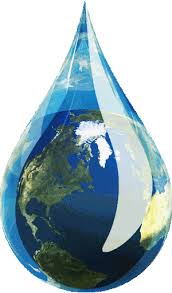During a time-travel scene in the 1989 film “Back to the Future II,” director Robert Zemeckis and writer Bob Gale attempted to predict the world of  October 2015. They got some things right and others wrong. Zemeckis and Gale aren’t the only ones who made predictions about 2015, however. Six years ago, in November 2009, Marquette Law School’s Public Policy Initiative convened a conference entitled “Milwaukee 2015: Water, Jobs, and the Way Forward.” The speakers included Wisconsin’s then-Governor Jim Doyle, Milwaukee Mayor Tom Barrett; and Badger Meter’s Rich Meeusen, co-chair of what was then called the Milwaukee 7 Water Council (and now is simply The Water Council). The conference’s key theme was making southeast Wisconsin the hub of freshwater-related business in North America.
October 2015. They got some things right and others wrong. Zemeckis and Gale aren’t the only ones who made predictions about 2015, however. Six years ago, in November 2009, Marquette Law School’s Public Policy Initiative convened a conference entitled “Milwaukee 2015: Water, Jobs, and the Way Forward.” The speakers included Wisconsin’s then-Governor Jim Doyle, Milwaukee Mayor Tom Barrett; and Badger Meter’s Rich Meeusen, co-chair of what was then called the Milwaukee 7 Water Council (and now is simply The Water Council). The conference’s key theme was making southeast Wisconsin the hub of freshwater-related business in North America.
Meeusen delivered one of the gathering’s most memorable lines: “My dream is, by 2015, when people think water, they think Milwaukee.” Another speaker, Anselmo Teixeira of Siemens, noted that as of 2009 no water technology hub had been established in North America. Teixeira recognized Milwaukee’s advantages in seeking to become such a center, but cited the need for government, university, and business leaders to do “the right things.” Six years later, in the conference’s title year, we can begin to evaluate whether Meeusen’s dream has become a reality.
One can easily make the argument that over the past six years, Milwaukee has become synonymous with water sector innovation; indeed, recent articles in The Economist, the Chicago Tribune, and the Buffalo News, are among the many recognizing Milwaukee’s leadership role in water matters. In 2013 Forbes Magazine called Milwaukee “the capital of water.” Some skeptics continue to claim that all of this is the product of an elaborate public relations campaign with little substance; “smoke and mirrors,” when put in appropriate context. But they are in the distinct minority, especially amid enduring and concrete signs of the region’s progress:
- The Global Water Center, a seven-story, 98,000 square foot building in Milwaukee’s Third Ward, opened in 2013 and is already 99 percent occupied with dozens of water-related tenants. A second building, the Global Water Center II, is scheduled to open in late 2016.
- A recent economic analysis of the “Water Technology District” in Milwaukee’s Walker’s Point neighborhood estimated that $211.6 million worth of development has occurred in the area since 2012.
- In total, the Water Council estimates that there are now over 200 water technology businesses in the region, along with academic programs at Marquette (including the Law School’s newly-expanded Water Law and Policy Initiative, intended to complement the region’s existing strengths in science and technology), UW-Milwaukee, and UW-Whitewater.
- Summarizing these developments, USEPA Administrator Gina McCarthy said in 2014 that Milwaukee will “be the freshwater capital of the world.”
Even proponents of Milwaukee’s growing status as a water hub would likely admit that much work remains. For example, one primary goal of the conference participants was attracting “thirsty” industries from other parts of the country (such as Atlanta) to Milwaukee, even to the point of offering free or reduced price water as an incentive. It’s not clear that has happened yet, or that such incentives would make good policy. Nevertheless, it would be difficult to argue that Milwaukee has not positioned itself well to take advantage of such opportunities if and when they arise. Put another way, Milwaukee’s leaders have done much to clear “The Way Forward” of the obstacles perceived in 2009.
